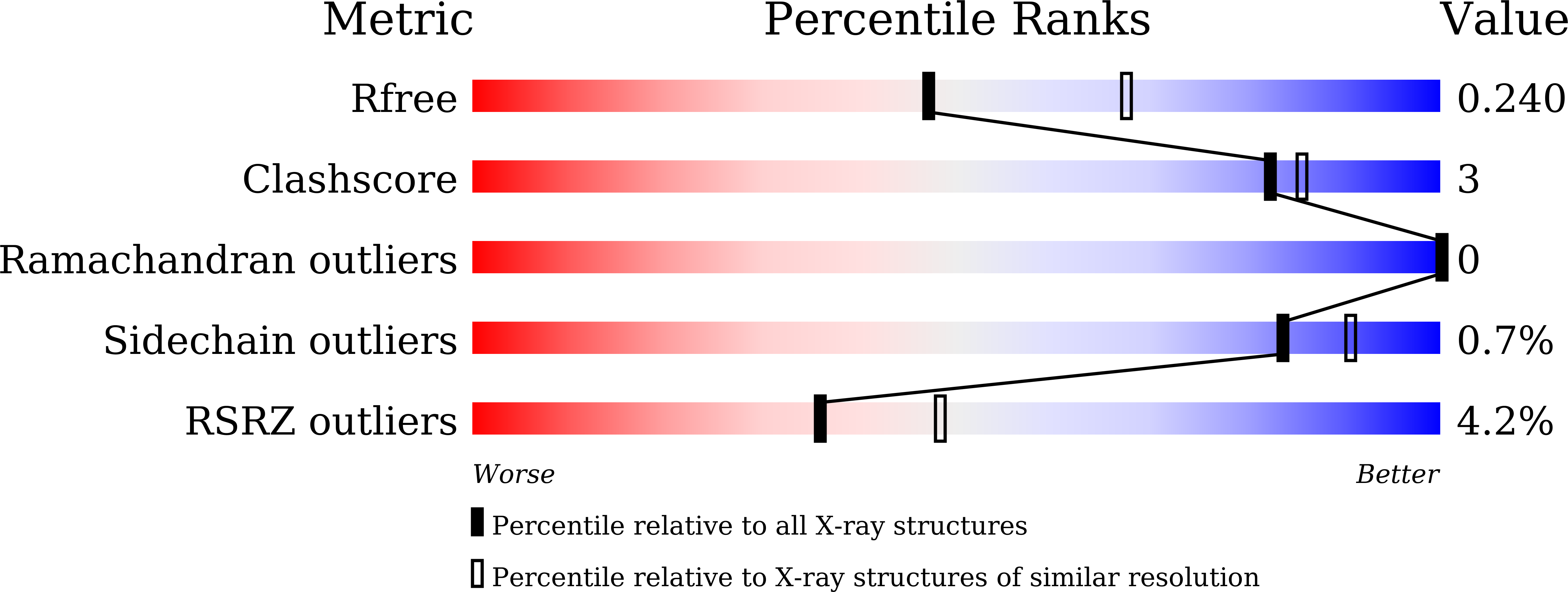Structural Basis of Specificity for Carboxyl-Terminated Acyl Donors in a Bacterial Acyltransferase.
Xiao, F., Dong, S., Liu, Y., Feng, Y., Li, H., Yun, C.H., Cui, Q., Li, W.(2020) J Am Chem Soc 142: 16031-16038
- PubMed: 32803979
- DOI: https://doi.org/10.1021/jacs.0c07331
- Primary Citation of Related Structures:
6KJH, 6KJJ, 6KJP, 6KJQ, 6KJR, 6KJT - PubMed Abstract:
Macrolactins (MLNs) are a class of important antimacular degeneration and antitumor agents. Malonylated/succinylated MLNs are even more important due to their efficacy in overcoming multi-drug-resistant bacteria. However, which enzyme catalyzes this reaction remains enigmatic. Herein, we deciphered a β-lactamase homologue BmmI to be responsible for this step. BmmI could specifically attach C3-C5 alkyl acid thioesters onto 7-OH of MLN A and also exhibits substrate promiscuity toward acyl acceptors with different scaffolds. The crystal structure of BmmI covalently linked to the succinyl group and systematic mutagenesis highlighted the role of oxyanion holelike geometry in the recognition of carboxyl-terminated acyl donors. The engineering of this geometry expanded its substrate scope, with the R166A/G/Q variants recognizing up to C12 alkyl acid thioester. The structure of BmmI with acyl acceptor MLN A revealed the importance of Arg292 in the recognition of macrolide substrates. Moreover, the mechanism of the BmmI-catalyzed acyltransfer reaction was established, unmasking the deft role of Lys76 in governing acyl donors as well as catalysis. Our studies uncover the delicate mechanism underlying the substrate selectivity of acyltransferases, which would guide rational enzyme engineering for drug development.
Organizational Affiliation:
Key Laboratory of Marine Drugs, Ministry of Education, School of Medicine and Pharmacy, Ocean University of China, 266003 Qingdao, China.















